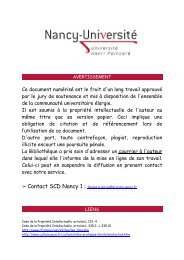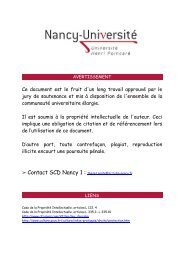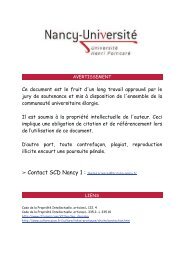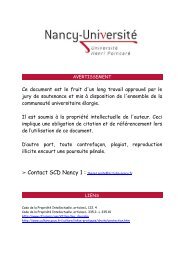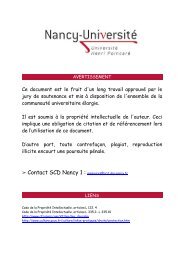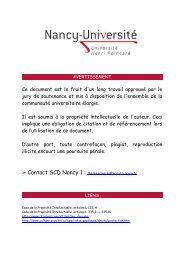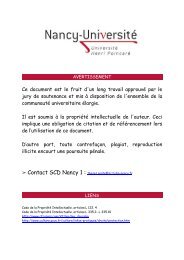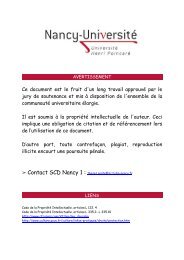La dystocie cervicale et la stagnation de la dilatation
La dystocie cervicale et la stagnation de la dilatation
La dystocie cervicale et la stagnation de la dilatation
You also want an ePaper? Increase the reach of your titles
YUMPU automatically turns print PDFs into web optimized ePapers that Google loves.
• Concernant le gluconate <strong>de</strong> calcium® :<br />
Le dosage du gluconate <strong>de</strong> calcium® est toujours i<strong>de</strong>ntique : 1 ampoule. Comme le<br />
spasfon®, son utilisation est majoritairement faite en IVL par le biais d’une solution <strong>de</strong><br />
NaCl 0.9 %.<br />
On r<strong>et</strong>rouve souvent une association <strong>de</strong> gluconate <strong>de</strong> calcium® <strong>et</strong> <strong>de</strong> spasfon® en<br />
perfusion dans un NaCL <strong>de</strong> 100 ml à 0.9 %. Le débit <strong>de</strong> perfusion est re<strong>la</strong>tivement<br />
rapi<strong>de</strong> : 20 à 30 minutes.<br />
1.7.6. L’accouchement<br />
Dans c<strong>et</strong>te partie, on fait le point sur le mo<strong>de</strong> d’accouchement afin <strong>de</strong> savoir si <strong>la</strong><br />
di<strong>la</strong>tation a pu reprendre. En cas <strong>de</strong> césarienne nous avons précisé son indication afin <strong>de</strong><br />
ne pas entraîner <strong>de</strong> biais.<br />
Graphique 16 :<br />
58



